Large part injection molding is essential for producing large plastic components for industries like automotive and construction.
This article explains the process, materials used, and the challenges faced. Learn how specialized machinery allows for the efficient production of high-quality parts that standard molding can’t achieve.
Key Takeaways
Large part injection molding is essential for producing oversized plastic components in industries like automotive and construction, requiring specialized machinery and techniques.
Choosing the right materials, such as polypropylene and polycarbonate, is crucial for ensuring the quality and functionality of large injection molded parts, with the ability to use recycled materials enhancing sustainability.
Effective quality control, proper clamping force, and advanced techniques like gas assist molding are vital for producing high-quality large plastic parts while enhancing efficiency and reducing defects.
Understanding Large Part Injection Molding
Large part injection molding involves producing bigger plastic components that exceed the capabilities of standard molding machines. This process is essential in various industries, including automotive, construction, and storage solutions.
For instance, automotive body panels, construction equipment parts, and large storage containers are some of the common applications. The ability to create these large components with precision and efficiency underscores the significance of large part injection molding in today’s manufacturing landscape.
To accommodate the production of larger parts, specialized equipment capable of higher clamping forces and larger shot sizes is required. These machines can exert clamping forces up to 8,000 tons, ensuring that even the bulkiest molds are securely held in place during the injection process.
However, managing the material flow and ensuring complete mold cavity fill pose significant challenges. Addressing these challenges is crucial for achieving high-quality, defect-free parts.
Producing large parts efficiently requires longer cooling times due to their size and wall thickness, which can affect production cycles and overall efficiency.
Nevertheless, the process can utilize up to 100% recycled materials, contributing to sustainability and reducing environmental impact. This blend of efficiency and eco-friendliness makes large part injection molding a vital process in modern manufacturing.
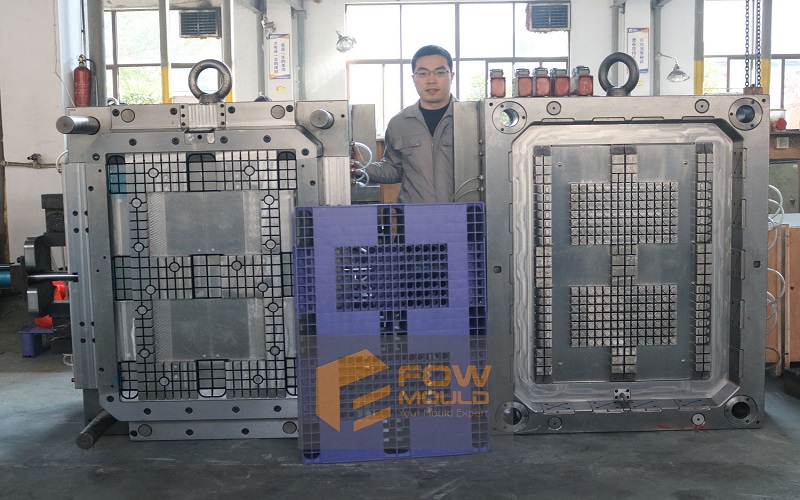
Key Materials for Large Part Injection Molding
Choosing the right material is crucial as it directly affects flow properties and the overall quality of the final product. Commonly utilized resins in part injection molding include nylon, polyethylene, polypropylene, and polycarbonate.
Each of these materials offers unique properties that make them suitable for specific applications. For example, polypropylene is favored for its high melting point and chemical resistance, making it ideal for automotive parts and household goods.
Polycarbonate, known for its strength and lightweight properties, is often used when transparency and high impact resistance are required, such as in medical equipment and eyewear.
High-density polyethylene (HDPE) is another popular choice due to its robustness and chemical resistance, making it suitable for products like storage containers and industrial components.
Nylon is versatile, strong, and flexible, often mixed with other materials to enhance its properties.
Selecting the right material depends on the specific application and desired properties of the final product.
For instance, automotive products typically use polypropylene and ABS materials, while plastic pallets may utilize both polypropylene and HDPE, sometimes incorporating recycled HDPE for added sustainability.
Various additives can also be introduced to improve material properties like UV resistance, wear resistance, and temperature stability. These considerations ensure that the selected materials meet the functional and aesthetic requirements of the large parts being produced.

The Injection Molding Process for Large Parts
The injection molding process for large parts involves several critical steps that ensure the production of high-quality components. It begins with proper mold preparation, including dust removal and the application of release agents to facilitate the smooth ejection of the final product.
Once the mold is ready, plastic resin pellets are heated until they reach a molten state and are then injected into the mold under high pressure. This high-pressure injection is crucial for achieving the desired precision and detail in the final product.
Molding large parts often involves longer lead times due to the requirement for larger steel blocks used in the production of molds. These steel blocks are essential for creating the robust molds needed to withstand the high pressures involved in the injection process.
High-pressure injection molding typically operates at pressures ranging from 350 to 1300 bar, making it suitable for high-volume production of complex parts. The combination of high pressure and robust molds ensures that even the most intricate designs can be accurately replicated in large plastic parts.
Throughout the injection molding process, several factors must be carefully managed to ensure the quality and consistency of the final product.
These factors include the temperature and pressure settings of the injection molding machine, the cooling time required for the molded part, and the use of proper mold maintenance practices. Careful control of these variables allows manufacturers to produce large plastic parts with high precision and minimal defects.

High-Pressure vs Low-Pressure Injection Molding
Injection molding can be broadly classified into two primary processes: high-pressure and low-pressure injection molding. Each process serves different manufacturing needs and offers distinct advantages.
High-pressure injection molding typically offers faster cycle times and is suitable for precise, high-strength applications.
This process involves injecting the molten plastic at high pressures, ranging from 350 to 1300 bar, which ensures that the material fills every intricate detail of the mold cavity.
High-pressure injection molding is ideal for producing complex parts with tight tolerances and high structural integrity, including those made through plastic injection molding.
On the other hand, low-pressure injection molding involves lower material flow rates and is preferred for applications requiring larger, thinner parts.
This process operates at much lower pressures, which helps reduce the risk of material degradation and allows for the production of parts with larger surface areas.
Low-pressure injection molding is often used for creating lightweight components that do not require the same level of structural strength as those produced through high-pressure molding.
Choosing between high-pressure and low-pressure injection molding depends on the specific requirements of the project.
Factors such as part size, complexity, material properties, and production volume all play a role in determining the most suitable injection molding process.
Understanding the strengths and limitations of each process enables manufacturers to make informed decisions, optimizing production efficiency and product quality.

Structural Foam Molding for Large Parts
Structural foam molding is a specialized technique used in large part injection molding to produce lightweight, strong components. This process involves injecting a thermoset polymer mixed with an inert gas or chemical blowing agent into the mold.
The result is a part with a low-density core covered by a higher density skin, providing a unique combination of strength and reduced weight.
Structural foam molding is particularly useful for applications where weight reduction is critical without compromising the structural integrity of the part.
Blow molding is another method that can be utilized for similar applications.
One of the main advantages of structural foam molding is its ability to lower the density of parts by 10-30% without sacrificing strength. This reduction in weight can lead to significant cost savings in material usage and shipping.
Additionally, structural foam molding offers design flexibility, allowing for various colors and textures to be incorporated into the parts, eliminating the need for post-processing.
This versatility makes structural foam molding an attractive option for a wide range of applications, from vehicle roofs and body panels to medical equipment housing and sports equipment like skis.
The ability to produce large components with shot sizes of up to 100 pounds further highlights the suitability of structural foam molding for large part production.
This technique not only enhances the aesthetic and functional properties of the parts but also contributes to overall production efficiency.
As the demand for lightweight, high-strength components continues to grow, structural foam molding is poised to play an increasingly important role in the manufacturing industry.
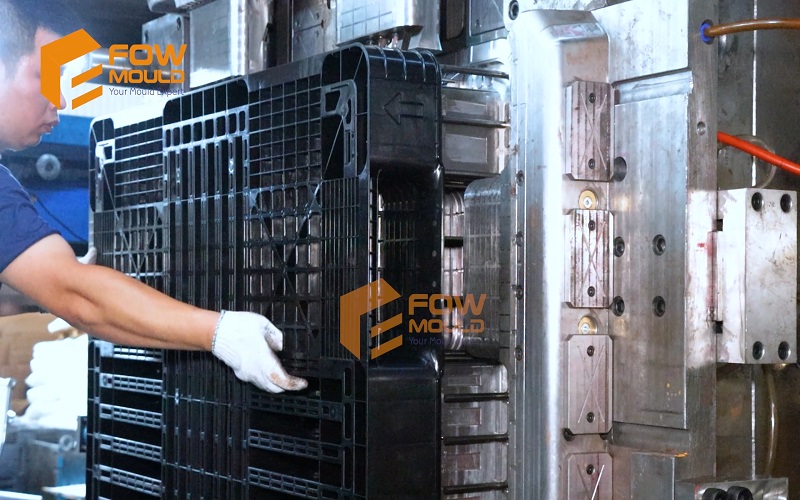
Importance of Clamping Force in Large Part Injection Molding
Maintaining proper clamping force is crucial in large part injection molding to prevent defects such as material leakage during the injection process.
Clamping force refers to the pressure applied to keep the mold halves closed during injection, ensuring that the molten plastic fills the mold cavity accurately and uniformly. Without sufficient clamping force, the mold may open slightly during injection, leading to part distortion, variations, and increased scrap rates.
Consistent clamping force is essential for producing uniform parts that meet strict quality standards. In large part injection molding, specific machinery capable of handling high clamping forces is required to effectively mold bigger components.
The clamping force needed during the injection process is proportional to the surface area of the part being produced. Therefore, larger parts with greater surface areas require more clamping force to ensure proper mold closure and part accuracy.
Adequate clamping force also plays a vital role in extending the mold’s lifespan by reducing wear and maintenance needs.
Proper clamp geometry ensures even force distribution, preventing mold deformation and extending component life. By maintaining optimal clamping force, manufacturers can produce high-quality large plastic parts while minimizing production costs and downtime associated with mold maintenance.
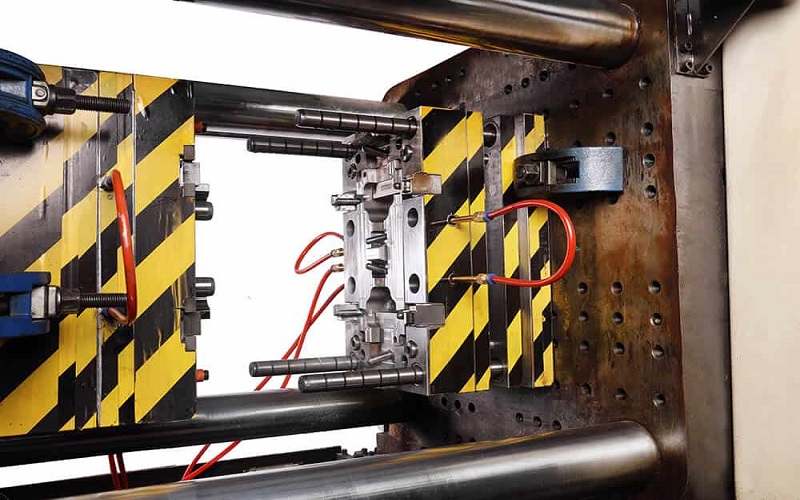
Gas Assist Molding for Enhanced Large Part Production
Gas assist molding is an advanced technique that enhances the production of large plastic parts by injecting nitrogen gas into the mold. This process creates hollow sections within the part, significantly reducing material usage and weight.
Gas assist molding incorporates stages such as primary and secondary gas penetration, ensuring optimal distribution and shape retention during cooling. The result is a lightweight, strong, and aesthetically pleasing part that meets the functional requirements of various applications.
One of the key benefits of gas assist molding is its ability to enhance the aesthetics of large plastic parts while reducing weight.
By creating hollow sections, this technique allows for more complex and intricate designs without compromising structural integrity. Additionally, gas assist molding reduces cycle times by allowing hollow sections to cool faster, improving overall production efficiency.
While gas assist molding may involve higher initial equipment costs, the long-term benefits in terms of material savings, weight reduction, and improved part quality make it a worthwhile investment for manufacturers.
As the demand for lightweight, high-performance components continues to grow, gas assist molding is becoming an increasingly popular choice in the production of large plastic parts.
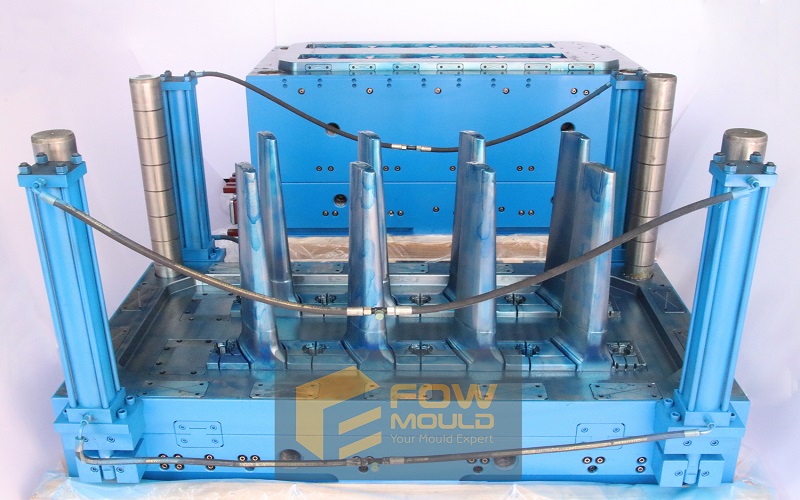
Choosing The Right Injection Molding Machine
Selecting the right injection molding machine is crucial for successful large part injection molding. The shot size of an injection molding machine refers to the maximum volume of material that the screw can inject into the mold during a single cycle.
Accurate calculation of machine shot capacity is essential, as incorrect shot sizes can lead to issues like underfilling or poor melt quality. For general-purpose resins, a shot capacity of 20 to 80 percent is recommended, while engineered resins should aim for 30 to 50 percent.
Machines that have a clamping force of 500 tons or more are classified as large tonnage injection molding machines and large tonnage machines.
This classification helps differentiate them from smaller machinery. When selecting an injection molding machine, both clamping unit and injection unit specifications must be analyzed separately to ensure proper machine selection.
Considerations for the clamping unit include tie-bar spacing, mold height limits, stroke, and daylight, not just tonnage. Partnering with seasoned molders ensures access to a full-service package that includes consultation, design, prototyping, and production.
Several brands are recognized for their innovation and quality in injection molding machines, which are crucial factors in selection.
While price is an important consideration, the specific application and needs of the project should also be taken into account when choosing an injection molding machine. By working with experienced molders and reputable brands, manufacturers can optimize their production processes and achieve high-quality results.

Best Practices for Quality Control in Large Part Injection Molding
Quality control is paramount in large part injection molding to ensure that only defect-free parts reach the customer.
The process involves a four-stage quality control system: design review, mold and pre-production inspection, in-process quality control, and final inspection. Each stage is designed to identify and rectify potential issues early in the manufacturing process, thereby maintaining consistency and high standards.
In-process quality control is especially critical, as it involves monitoring the temperature and pressure settings of the injection molding machine to prevent defects in the final product.
Regular checks and calibrations ensure that the machine operates within the specified parameters, reducing the risk of producing defective parts. Final inspections are conducted by trained personnel who meticulously examine the parts for any defects before packaging and shipping.
Partnering with established injection molders can streamline the manufacturing process, leading to quicker project completions and enhanced quality control.
Experienced molders are more likely to be familiar with industry standards and regulatory requirements, ensuring that production runs meet all necessary guidelines. By adhering to these best practices, manufacturers can produce high-quality large plastic parts consistently.

Benefits of Partnering with Experienced Injection Molders
Partnering with experienced injection molders offers numerous advantages in large part injection molding. These professionals bring a wealth of knowledge and expertise, significantly enhancing production capabilities and efficiency.
They can manage the challenges associated with high capital costs, large footprint, and significant resource requirements of large tonnage injection molding machines. This expertise allows manufacturers to focus on other critical aspects of their business.
Experienced injection molded molders can help streamline the production process, reducing costs and improving turnaround times for large part projects. Efficient production not only minimizes expenses but also ensures that products reach the market faster.
This competitive advantage is crucial in industries where time-to-market can significantly impact profitability. Injection molds play a vital role in this process.
Documentation of quality control procedures is another benefit of partnering with seasoned molders. This documentation serves as a reference for future production runs and helps identify areas for improvement.
Leveraging the expertise and resources of experienced injection molders allows manufacturers to achieve higher quality standards, better efficiency, and improved production outcomes.
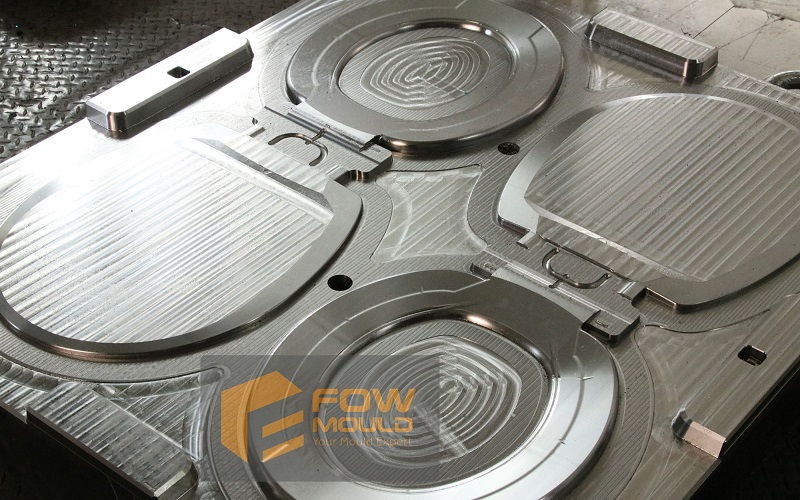
Summary
In conclusion, large part injection molding is a complex but highly rewarding manufacturing process that plays a crucial role in various industries.
From understanding the basics to exploring advanced techniques like gas assist molding and structural foam molding, this guide has covered essential aspects of producing large plastic parts. Key factors such as material selection, clamping force, and quality control have been highlighted to ensure successful and efficient production.
Partnering with experienced injection molders can significantly enhance production capabilities, reduce costs, and improve turnaround times.
By following best practices and leveraging the expertise of seasoned professionals, manufacturers can produce high-quality, defect-free large plastic parts that meet industry standards and customer expectations. Embrace the power of large part injection molding and take your manufacturing process to new heights.
Frequently Asked Questions
What are the common applications of large part injection molding?
Large part injection molding is typically utilized in the production of automotive body panels, construction equipment, and large storage containers, showcasing its versatility in manufacturing significant components across various industries.
What materials are commonly used in large part injection molding?
Large part injection molding commonly utilizes nylon, polyethylene, polypropylene, and polycarbonate due to their distinct properties that cater to various applications. These materials ensure optimal performance and durability in molded products.
What is the importance of clamping force in large part injection molding?
Clamping force is essential in large part injection molding as it prevents defects like material leakage and maintains part accuracy by securely holding the mold halves together during the injection process.
What are the benefits of gas assist molding?
Gas assist molding improves the aesthetics and reduces the weight of large plastic parts by creating hollow sections with nitrogen gas, which also leads to decreased material usage. This results in more efficient production and cost savings.
Why is partnering with experienced injection molders beneficial?
Partnering with experienced injection molders is beneficial as their expertise enhances production capabilities, effectively manages challenges, and improves efficiency, leading to high-quality outcomes.
